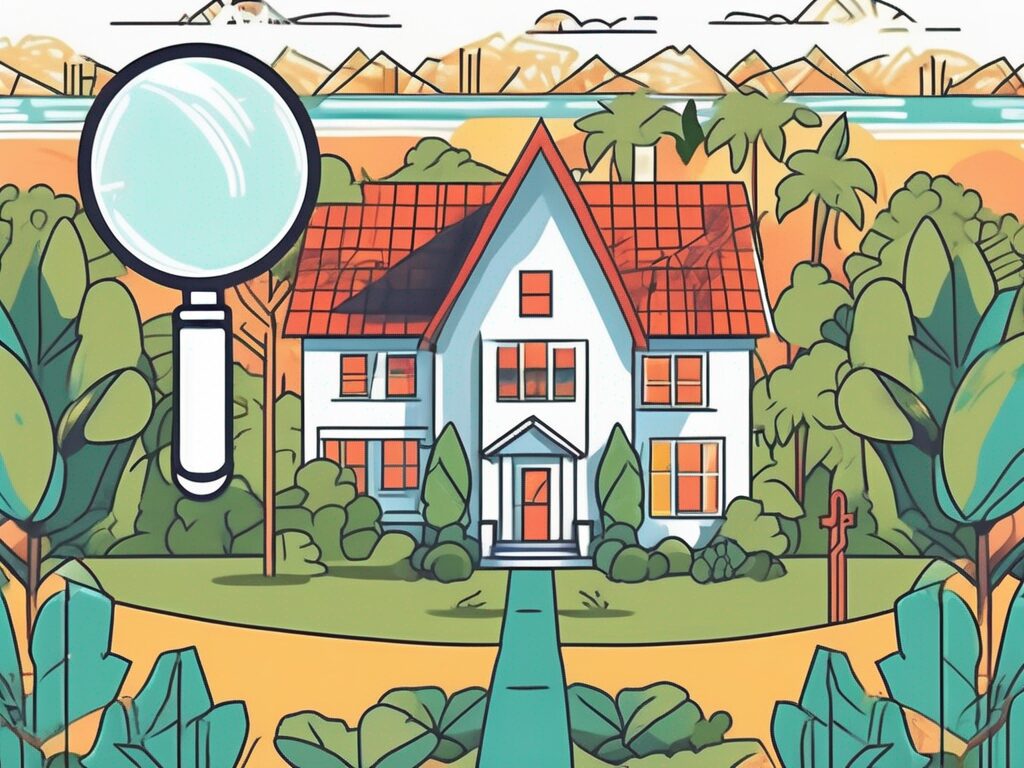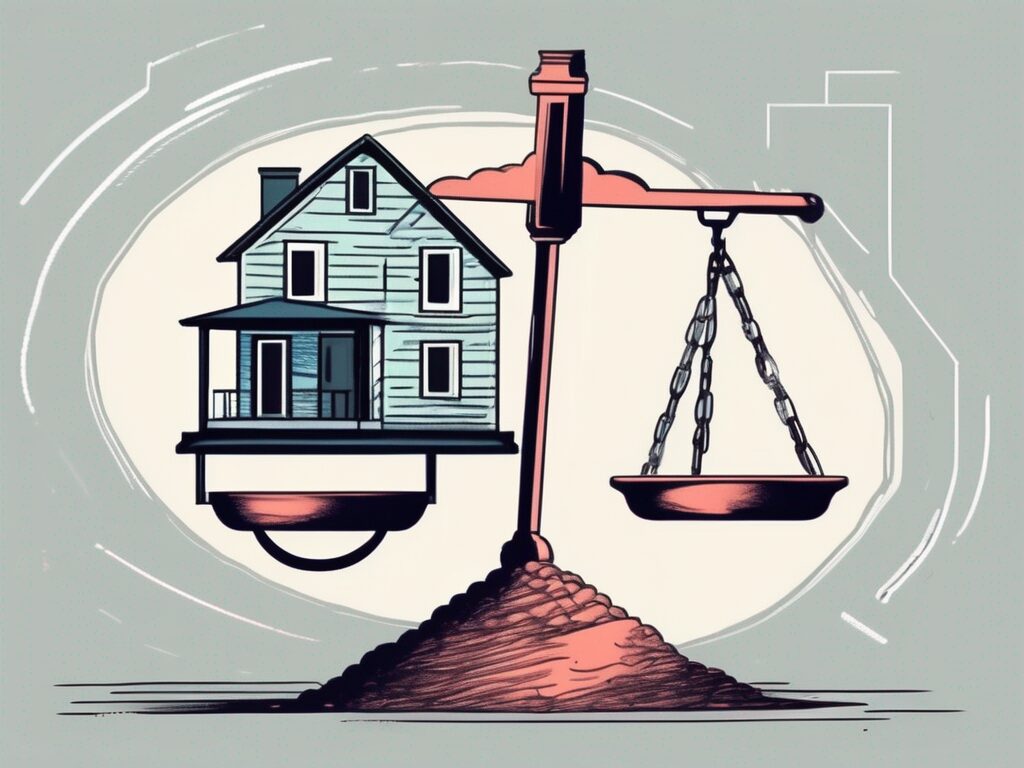
Agent A-Team or Solo Superhero? Finding the Right Real Estate Partner for Your Selling Journey in Wildwood Florida
When it comes to selling your home in Wildwood, Florida,…
January 29, 2024
In recent years, homeowners insurance rates have been on the rise, causing concern and frustration for many homeowners. Understanding the factors behind these increasing rates and knowing how to address them is crucial for homeowners who want to protect their assets without breaking the bank. This article will explore the main factors contributing to rising home insurance rates, individual factors that influence premiums, states experiencing the highest rate increases, strategies to mitigate the impact of rising rates, additional tips for lowering homeowners insurance costs, and important takeaways for homeowners. It will also address frequently asked questions about homeowners insurance rates.
One of the main reasons for the increase in homeowners insurance rates is the impact of severe weather events and natural disasters. Hurricanes, floods, wildfires, and other catastrophic events have become more frequent and severe in recent years, leading to a rise in insurance claims. Insurance companies factor in the increased risk of damage when determining rates, resulting in higher premiums for homeowners.
Severe weather events, such as hurricanes, can cause extensive damage to homes, leading to costly repairs and replacements. The strong winds and heavy rainfall associated with hurricanes can result in roof damage, flooding, and structural issues. Insurance companies must account for the increased likelihood of these events when setting rates, as they need to have sufficient funds to cover potential claims.
In addition to hurricanes, floods have also become a significant concern for homeowners and insurers alike. Rising sea levels, heavy rainfall, and inadequate drainage systems can lead to devastating floods that can destroy homes and belongings. The costs associated with repairing flood-damaged homes can be astronomical, and insurance companies must adjust their rates accordingly to ensure they can cover these expenses.
Wildfires have also become a growing threat in many regions. Dry conditions, combined with factors such as human activity and climate change, have contributed to the increase in wildfires. These fires can quickly spread and engulf entire neighborhoods, leaving homeowners with significant property damage. Insurers must consider the increased risk of wildfires when determining rates, as they may need to pay out substantial claims in the event of a fire.
While homeowners cannot prevent these events from occurring, they can take steps to mitigate their impact. Investing in home improvements such as storm shutters, reinforced roofing, and impact-resistant windows can not only protect the home but also lead to potential discounts on insurance premiums. These measures can help minimize the risk of damage during severe weather events, reducing the likelihood of filing a claim and potentially lowering insurance rates.
Another significant factor behind rising home insurance rates is the increasing costs of rebuilding and repairing homes. As construction and material costs continue to rise, insurance companies have to adjust their rates to account for these expenses. Additionally, factors such as labor shortages and supply chain disruptions can further drive up the cost of reconstructing or repairing a home, leading to higher insurance premiums.
When a home is damaged or destroyed, insurance companies need to consider the cost of rebuilding or repairing it. The price of construction materials, such as lumber, concrete, and roofing materials, has been steadily increasing in recent years. This rise in material costs directly impacts the cost of rebuilding a home, and insurers must adjust their rates accordingly to ensure they can cover these expenses.
Labor shortages in the construction industry can also contribute to higher insurance rates. As demand for construction workers exceeds supply, labor costs can rise significantly. This increase in labor expenses can further drive up the overall cost of rebuilding or repairing a home, making it necessary for insurance companies to raise premiums to cover these additional costs.
Supply chain disruptions, such as those caused by natural disasters or global events, can also impact the cost of rebuilding or repairing a home. When supply chains are disrupted, the availability of construction materials may be limited, leading to higher prices. Insurance companies must consider these potential disruptions and adjust their rates accordingly to ensure they can cover the increased costs of reconstruction or repair.
Homeowners can minimize the impact of these rising costs by regularly reviewing their coverage and ensuring that it is adequate to rebuild their home in the event of a total loss. It is essential to consult with an insurance professional to assess the replacement cost of the home accurately. By having the right coverage in place, homeowners can avoid being underinsured and facing financial hardships in the event of a disaster.
In recent years, there has been a significant increase in insurance claims for various reasons, including the growing number of homeowners filing claims for smaller incidents and an increase in fraudulent claims. Insurance companies need to cover the costs of these claims, which ultimately leads to higher premiums for all homeowners.
While catastrophic events often receive the most attention, smaller incidents can also contribute to the rise in insurance claims. Homeowners may file claims for incidents such as water damage, theft, or liability claims. These smaller claims can add up and put a strain on insurance companies’ resources, leading to higher rates for all policyholders.
Fraudulent claims also play a role in the increasing number of insurance claims. Some individuals may attempt to defraud insurance companies by filing false or exaggerated claims. These fraudulent claims result in financial losses for insurers, who then pass on these costs to policyholders through higher premiums.
Homeowners can help prevent unnecessary claims by properly maintaining their property and taking proactive measures to prevent accidents or damage. Regularly inspecting the home for potential risks and addressing them promptly can reduce the likelihood of filing a claim and potentially lower insurance rates. Additionally, homeowners should always be honest and transparent when filing a claim, as fraudulent activities not only harm insurance companies but also contribute to higher rates for everyone.
The age of a home can have a significant impact on insurance premiums. Older homes typically require more maintenance and may have outdated electrical, plumbing, or heating systems, increasing the risk of damage. Insurance companies may charge higher premiums for older homes to account for these potential risks.
However, it is important to note that not all older homes automatically have higher insurance rates. Insurance companies also consider factors such as the overall condition of the home, any renovations or upgrades that have been made, and the homeowner’s claims history. For example, if an older home has been well-maintained and has undergone recent renovations, it may be eligible for lower insurance rates.
Homeowners with older homes can reduce insurance costs by investing in renovations and upgrades that improve the overall condition and safety of the property. Upgrading electrical systems, replacing outdated plumbing, and installing modern security measures can help lower insurance rates. These improvements not only reduce the risk of damage but also demonstrate to insurance companies that the homeowner is proactive in maintaining their property.
Any changes made to a property can affect homeowners insurance rates. Adding features such as a swimming pool, trampoline, or roof deck can increase the potential for accidents and liability claims, resulting in higher insurance premiums. Insurance companies consider these additional risks when determining the cost of coverage.
On the other hand, making improvements that enhance safety and security, such as installing a security system or upgrading fire protection systems, may lead to lower insurance costs. These enhancements reduce the likelihood of accidents or damage, making the property less risky to insure.
Prior to making significant changes to a property, homeowners should consult with their insurance provider to understand how those changes will impact their rates. Assessing potential insurance cost implications can help homeowners make informed decisions about home improvements. Insurance providers can provide guidance on which improvements may lead to premium reductions and which may result in increased rates.
The location of a home plays a crucial role in determining insurance costs. Homes located in areas prone to natural disasters or high crime rates typically have higher insurance premiums. Insurance companies consider the risk associated with the location when underwriting policies, leading to increased rates for homeowners in these areas.
While homeowners cannot change the location of their property, they can take steps to mitigate risks. For example, installing storm shutters in hurricane-prone areas or investing in comprehensive security systems in high-crime areas may provide discounts on insurance premiums. Insurance companies often offer discounts for homeowners who take proactive measures to protect their properties against the specific risks associated with their location.
It is also worth noting that the proximity of a home to fire hydrants, fire stations, and other emergency services can also impact insurance rates. Homes located closer to these services may have lower premiums due to the reduced response time in case of emergencies.
While homeowners insurance rates have been rising nationwide, some states have experienced more significant increases than others. Understanding the trends and factors affecting these states can provide valuable insights for homeowners in those areas.
States such as Florida, Texas, Louisiana, California, and New York have been particularly affected by rising home insurance rates due to their exposure to severe weather events and high population density. Homeowners in these states should closely monitor their insurance rates and explore strategies to mitigate the impact of rising costs.
In Florida, for example, the state’s vulnerability to hurricanes and tropical storms has led to a surge in home insurance rates. The frequency and intensity of these weather events have increased in recent years, causing insurers to reassess their risk exposure and adjust premiums accordingly. Homeowners in coastal areas, where the risk of storm surge and wind damage is higher, have seen the most significant rate increases.
Similarly, Texas has experienced a rise in home insurance rates due to its susceptibility to severe weather conditions, including tornadoes and hailstorms. The state’s vast size and diverse geography make it prone to a wide range of natural disasters, leading insurers to raise premiums to account for the increased risk. Homeowners in regions such as Tornado Alley, which stretches across the central part of the state, face the highest insurance rate hikes.
In Louisiana, the combination of its coastal location and the threat of hurricanes has resulted in escalating home insurance costs. The state’s proximity to the Gulf of Mexico puts it at risk of storm surge and flooding, which insurers factor into their pricing models. Homeowners in areas like New Orleans, which has a history of devastating hurricanes, have seen their insurance rates soar in recent years.
California, known for its susceptibility to wildfires and earthquakes, has also experienced significant home insurance rate increases. The state’s dry climate and extensive wildland-urban interface contribute to the heightened risk of wildfires, prompting insurers to adjust their rates accordingly. Additionally, the seismic activity along the San Andreas Fault and other fault lines increases the likelihood of earthquakes, further impacting insurance costs for homeowners.
New York, with its dense population and high property values, has seen a rise in home insurance rates as well. The state’s urban areas, such as New York City, face unique risks, including the potential for property damage due to fires, theft, and liability claims. Insurers take these factors into account when determining premiums, resulting in higher rates for homeowners in the state.
Given the ongoing trend of rising home insurance rates in these states, homeowners should be proactive in managing their insurance costs. Exploring options such as bundling policies, increasing deductibles, and implementing home safety measures can help mitigate the impact of rate increases. Additionally, staying informed about changes in the insurance market and comparing quotes from multiple insurers can provide homeowners with the opportunity to find the most competitive rates.
One strategy homeowners can consider to mitigate the impact of rising insurance rates is to increase their deductible. The deductible is the amount the homeowner must pay out of pocket before the insurance policy kicks in to cover a claim. By choosing a higher deductible, homeowners can lower their monthly premiums.
However, it is important to carefully assess the financial implications of a higher deductible. Homeowners should ensure they have sufficient savings to cover the deductible amount in the event of a claim.
When facing increasing home insurance rates, homeowners should not hesitate to shop around for the best insurance quote. Different insurers have varying pricing models and may offer different discounts or policy options. By obtaining quotes from multiple insurers, homeowners can compare rates and coverage to find the best value for their needs.
It is important to request quotes that reflect the current coverage requirements to ensure accurate comparisons. Additionally, consider working with an independent insurance agent who can provide expert advice and access to a broader range of insurance providers.
Another strategy to reduce homeowners insurance costs is to consider bundling coverage. Many insurance companies offer discounted rates when multiple policies, such as home and auto insurance, are bundled together. Homeowners should inquire with their insurance provider to explore potential discounts for bundling coverage.
When considering bundling, homeowners should also review the coverage and compare it to standalone policies to ensure they are not sacrificing important coverage or accepting lesser protection.
Homeowners may be pleasantly surprised by the number of hidden discounts available when it comes to homeowners insurance. Insurance companies offer various discounts for factors such as having a smoke-free home, having a home security system, or having an excellent claims history. Identifying and taking advantage of these discounts can result in considerable savings on insurance premiums.
It is important for homeowners to regularly review their coverage and notify their insurance provider of any changes that may qualify them for additional discounts. Staying proactive can help maximize savings.
An additional strategy to address rising insurance rates is to periodically evaluate and adjust coverage. As the value of a home changes over time, it is important to review the policy to ensure it reflects the current replacement cost. Over-insuring a home can lead to higher premiums, while under-insuring can result in inadequate coverage.
Working with an insurance professional to conduct a thorough assessment of the coverage needs can help homeowners make informed decisions about adjusting their policy. Regularly reviewing coverage can also provide an opportunity to identify any unnecessary or duplicate coverage that can be removed to reduce costs.
In addition to the strategies mentioned above, homeowners can consider the following tips to further reduce homeowners insurance costs:
Addressing increasing homeowners insurance rates requires a proactive approach from homeowners. Understanding the factors driving the rate increases, assessing individual factors that influence premiums, and exploring strategies to mitigate the impact can help homeowners protect their assets while managing costs effectively.
States experiencing the highest home insurance rate increases, such as Florida, Texas, Louisiana, California, and New York, should pay special attention to their insurance rates and consider the strategies mentioned above to manage rising costs.
Homeowners are often curious about the average cost of homeowners insurance. While it can vary significantly based on factors such as location, property value, and coverage needs, the national average for homeowners insurance premiums is around $1,200 per year. However, homeowners should note that rates can be much higher or lower depending on individual circumstances.
It is important to consult with an insurance professional to obtain an accurate quote based on specific requirements and factors affecting the property. Comparing multiple quotes and customizing coverage ensures homeowners receive the best value for their insurance needs.
Overall, taking proactive measures to address increasing homeowners insurance rates can help homeowners protect their property while effectively managing insurance costs. By understanding the factors influencing insurance rates, exploring strategies to mitigate the impact, and staying proactive in reviewing coverage and adjusting policies, homeowners can navigate rising insurance costs with confidence.

If you want the Richr team to help you save thousands on your home just book a call.
 Book a call
Book a call